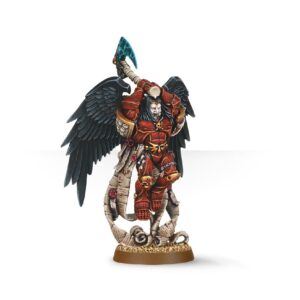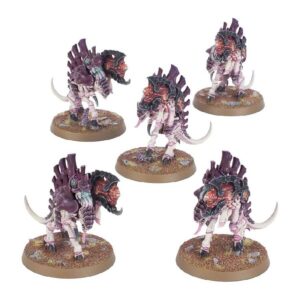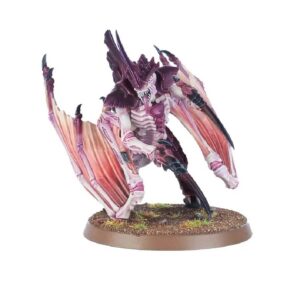Step 1: Prepare the model
Ensure the model is clean and free of any dust or debris. Remove any mold lines or imperfections using a hobby knife or file.
Step 2: Prime the model
Apply a thin and even coat of primer to Roboute Guilliman using a spray can or airbrush. This will create a smooth surface for the paint to adhere to.
Step 3: Basecoat the armor
Using a medium-sized brush, carefully apply a basecoat of deep blue paint to the armor areas. This will serve as the foundation for the model’s colors. For a regal touch, consider using a shade like Ultramarines Blue for the basecoat.
Step 4: Highlight the armor
Switch to a smaller brush and gently apply a lighter blue highlight to the edges and raised areas of the armor. This will add depth and enhance the details. Utilize a lighter shade of blue, such as Calgar Blue, to achieve this effect.
Step 5: Paint the gold details
Using a small brush, carefully paint the gold trim and other metallic details on the model. You can use a metallic gold paint like Liberator Gold for this step. Apply the gold paint smoothly and evenly, ensuring full coverage.
Step 6: Shade the gold
Using a wash like Reikland Fleshshade or Seraphim Sepia, carefully apply it to the recessed areas and crevices of the gold details. This will create shading and add depth to the metallic surfaces, giving them a more realistic and three-dimensional appearance. Be careful not to let the wash pool or accumulate in one area.
Step 7: Highlight the gold
Using a lighter gold paint, such as Stormhost Silver or Auric Armor Gold, gently drybrush or edge highlight the raised areas of the gold details. This will create a luminous effect and make the gold elements stand out. Take care to keep the highlights subtle and controlled, focusing on the edges and curves.
Step 8: Paint the face
Using a fine detail brush, paint Roboute Guilliman’s face with a flesh tone paint. Capture the facial features with precision, ensuring a lifelike appearance. Experiment with shades like Kislev Flesh to achieve a natural complexion.
Step 9: Enhance the details
Carefully paint the intricate details on the model, such as the eyes, Aquila symbol, and other small elements. Use contrasting colors to make these details stand out and bring the model to life.
Step 10: Add a burning effect to the sword
For an awe-inspiring touch, paint the sword to resemble the legendary Emperor’s weapon, burning with fiery intensity. Start by basecoating the sword with a vibrant red paint, representing the flames. Consider using a shade like Wazdakka Red for this effect.
Step 11: Create the flame effect
Using an orange or yellow paint, carefully apply thin lines or strokes along the edges and contours of the sword. Gradually blend these colors, creating a gradual transition from red to orange or yellow. This will give the impression of flames engulfing the blade. Paints like Troll Slayer Orange or Yriel Yellow can be effective for this step.
Step 12: Add highlights and details
To enhance the legendary appearance of the sword, use a fine brush to add bright highlights to the flames. Paint small, flickering streaks of white or a pale yellow to represent the hottest parts of the fire. This will give the sword an ethereal and dynamic look. White Scar or Dorn Yellow are two good options for this.
Step 13: Fine-tune the highlights and shadows
Using a fine detail brush, touch up any areas that need additional highlighting or shading. Add delicate highlights to the edges of the gold trim, deepen the shadows in the recessed areas, and refine the flames on the sword. This step will further enhance the definition and realism of the model.
Step 14: Finishing touches
Inspect the model and make any necessary touch-ups to ensure the paintwork is crisp and well-defined. You can also apply a protective varnish to seal the paint and safeguard it from wear and tear.



